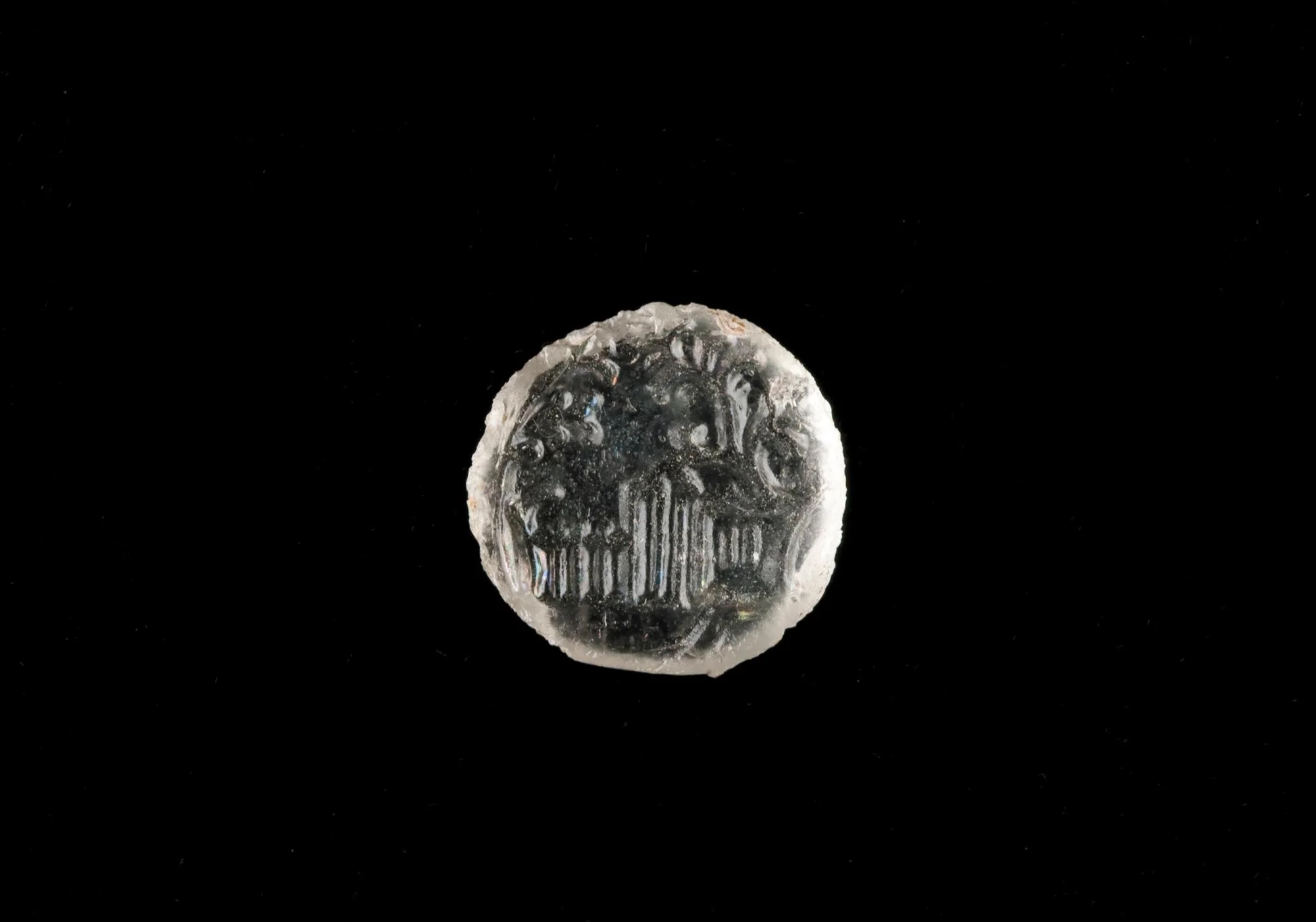Notes
This is a decorative glass inset which originally was set into the metal backing of a linked, or sleeve, button. Such insets are referred to as “pastes,” and could be colored, cut, or molded, and would have been set into metal backings. This example is a molded, colorless, leaded glass. The decoration is an elaborate scene encompassing a structure, trees, a fence and a path.
Sleeve buttons served much the same function as modern cuff links, securing shirt sleeves together. Generally, circular forms, such as this, gained popularity in the second half of the eighteenth century. Depending on the material used to embellish these forms, sleeve buttons could be quite expensive. By and large, however, simple metal sleeve buttons were among the cheaper items available at local stores.
Object Type
Has it Been Conserved?
Yes
Where Was It Found?
Project Site: House for Families [more details]
Material
Manufacturing Technology
Form
Shape
Completeness
Decorative Technology
Decorative Notes
molded house, 2 trees, fence, and path.
Date
18th century
Country of Origin
Dimensions
10.41mm x 2.05mm x 10.56mm (W x H x L)
Illustration shows object in comparison to the size of a quarter
Weight
0.5 gram(s)
Object Number
1787164
DAACS Number
1787164
Project: House for Families
The structure identified as the “House for Families” on the 1787 Vaughan plan likely housed the majority of the enslaved population living at the Mansion House Farm for much of the second half of the eighteenth century. The building was in existence from circa 1760 until it was demolished in late 1792 or early 1793. The archaeological evidence for the structure consisted of a brick-lined storage cellar (44FX762/40-47) measuring roughly six feet by six feet. Historically the cellar served as a handy trash receptacle once it ceased to be used for its original storage function, and through extensive excavation has yielded an extremely rich assemblage of household refuse. The analysis of these remains offers the opportunity to study important aspects of the daily lives of Mount Vernon's enslaved community.
See All Objects From this Dig








 Buttons
Buttons